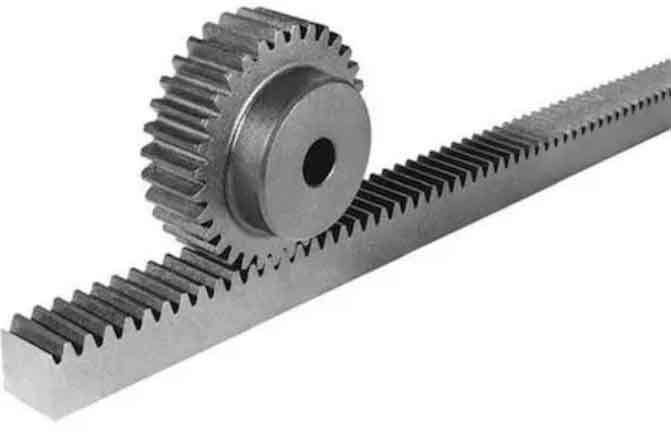
Rack and pinion gear systems are widely used for power conversion in various mechanical systems. They offer a simple and effective means of converting rotational motion into linear motion or vice versa. Here’s a comprehensive guide to rack and pinion gear systems and their power conversion principles:
Components of Rack and Pinion Gear Systems:
- Rack: The rack is a linear gear with teeth cut along a straight bar. It provides the linear motion in the system and is typically a flat or cylindrical shape with teeth on one side.
- Pinion: The pinion is a small gear with teeth that mesh with the teeth on the rack. It is usually mounted on a rotating shaft and converts the rotational motion into linear motion or vice versa.
- Support Structure: The rack and pinion gear system is supported by a structure that holds the rack securely and allows the pinion to rotate smoothly.
Power Conversion Principles:
The power conversion in a rack and pinion gear system follows a straightforward process:
- Rotational-to-Linear Conversion: When the pinion gear rotates, its teeth mesh with the teeth on the rack, causing the rack to move in a linear direction. The rotation of the pinion is converted into linear motion along the rack. This conversion is useful in applications where linear motion is required, such as in CNC machines, lifting systems, and linear actuators.
- Linear-to-Rotational Conversion: In the opposite direction, when an external force is applied to the rack, it moves linearly, causing the pinion gear to rotate. The linear motion of the rack is converted into rotational motion of the pinion. This conversion is useful in applications where rotational motion is needed, such as steering systems in automobiles or machinery that requires rotational movement based on linear input.
Advantages of Rack and Pinion Gear Systems:
Rack and pinion gear systems offer several advantages:
- Efficiency: Rack and pinion systems have high efficiency due to their direct power transfer. The meshing of teeth ensures minimal power loss, providing efficient power conversion.
- Compact Design: Rack and pinion systems are compact, making them suitable for applications with limited space.
- High Precision: The tooth engagement in rack and pinion systems provides high precision and repeatability, making them suitable for applications requiring accurate positioning.
- Smooth Operation: The meshing of teeth in rack and pinion systems results in smooth and quiet operation, minimizing vibrations and noise.
- Versatility: Rack and pinion gear systems can be used in various applications, such as CNC machines, robotics, automotive steering systems, elevators, and more.
- Easy Installation and Maintenance: Rack and pinion systems are relatively easy to install and maintain. They have a simple structure and require minimal lubrication and regular inspection.
Rack and pinion gear systems offer efficient power conversion and precise motion control in a wide range of applications. Whether converting rotational motion to linear motion or vice versa, they provide a reliable and compact solution for power transmission and motion control needs.
